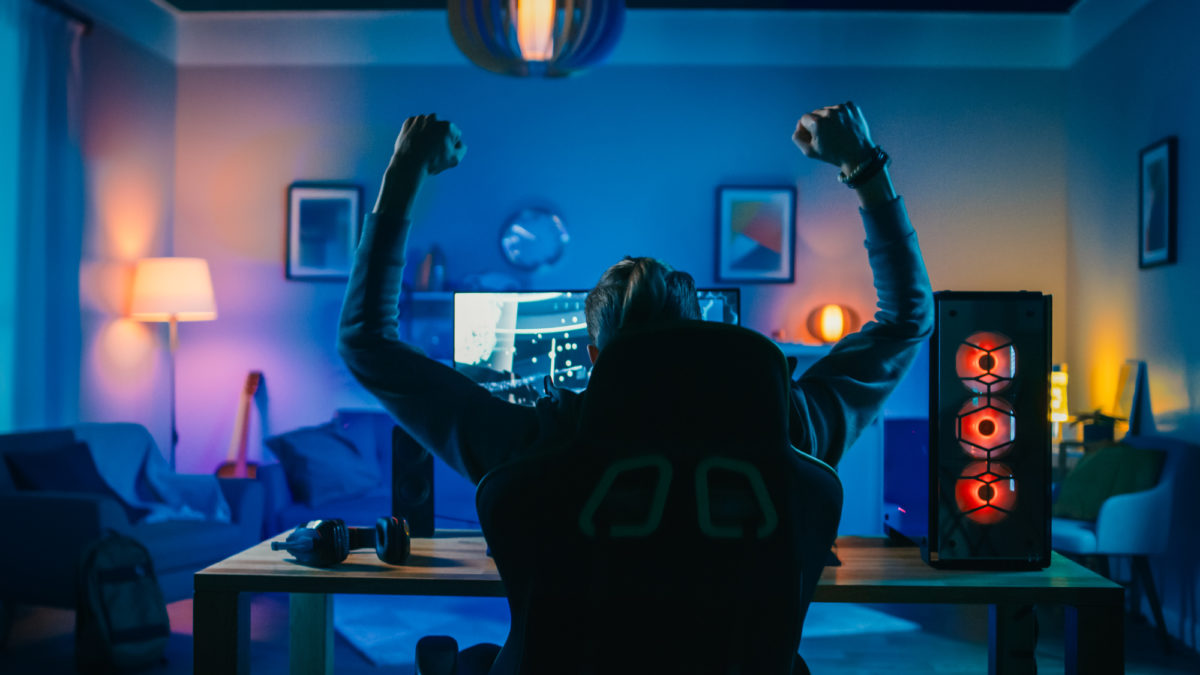Have you ever walked into a room and feel like you belong there? The paint color on the wall, the patterns on the furniture, and the accents on the tables just seem to speak to you and make you feel at home?
The design, decor and even the light and noise levels all evoke a response in a person and set a mood. The study of these responses is a fairly recent science called neuroarchitecture. Neuroarchitecture is a tool which guides people’s attention to and interaction with their environment within a building.
Here’s how you can use the principles behind neuroarchitecture to lift your spirits and improve your mood at home.
Neuroarchitecture in a Nutshell
Neuroarchitecture is essentially the marriage of neuroscience with architecture. It is the study of how the body and brain respond to built environments.
For instance, say that you are standing in a kitchen preparing a meal with your back to a noisy crowd of people who are waiting on food. Your alert brain will wonder what is going on behind you, producing adrenaline and cortisol, hormones associated with stress, fear and anxiety.
If your kitchen layout allows you instead to face those same people while preparing the meal, you would feel more in control and relaxed, and your brain would be releasing serotonin and oxytocin, hormones associated with relaxation, enjoyment and bonding.
Design and layout in both instances affect psychological and biological responses, which is exactly what neuroarchitecture aims at influencing. In fact, there are five brain systems that can be applied to architecture:
- Sensation and Perception – how do we see, hear, smell, taste, etc.?
- Learning and Memory – how do we store and recall our sensory experiences?
- Decision-making – how do we evaluate the potential consequences of our actions?
- Emotion – how do we become fearful or excited? Happy or sad?
- Movement – how do we interact with our environment and navigate through it?
Using Neuroarchitecture to Lift Your Spirits
Small changes in the layout, lighting, decor or design of your living space can have a big impact on the five brain systems. Let’s take a look at some examples of changes you can implement to boost your mood and lift your spirits:
Layout – we have already taken a look at how layout affects the brain in the kitchen example above. Consider also arranging your furniture so that you have a better view of the entryway, a window overlooking a pretty yard and a better view of the fireplace (if you have one).
Viewing the entryway reduces the stress of being surprised by unwanted visitors like intruders. Seeing outside allows you to keep track of the weather, which is important for survival to our more primordial brain functions and makes us feel more in control, plus a beautiful vista helps us to relax. And viewing a fireplace brings feelings of warmth and protection to your home (and helps you keep an eye on that fire, helping you to relax).
If you or a loved one is suffering from memory issues such as dementia or Alzheimer’s, then using visual cues such as pictures or other objects can assist in minimizing wandering behavior, and help guide to a central gathering location such as the kitchen or family room.
Lighting – too much or too little lighting can disrupt the body’s natural sleep cycle and may lead to an increase in stress. Each room, especially your bedroom, should have a variety of lighting options available, depending on the time of day and the activity taking place. Bright lights for daytime activities are best in rooms other than the bedroom. Lights on dimmers and candles are better for calming down at night and preparing for sleep.
Natural light is important, too. Research has shown that daylight increases productivity and comfort and is vital to regulating our circadian rhythms. It also aids in treating many types of depression and increases the release of serotonin, a hormone that will boost your mood. Make sure to keep blinds and curtains open during the day to allow as much natural light in as possible. If you only have a few windows in a room, try adding a large mirror opposite the windows to “double” the light through reflection or installing skylights or sun tunnels to bring in more light.
Decor – decor is a huge subject and volumes of information is written on how it can improve your well-being and comfort. Let’s tackle three areas of decor in neuroarchitecture that can affect your mood: color, art and shapes.
Choosing the right colors for your home are critical to your sense of peace and mental health. Colors too bland can fail to stimulate your brain adequately and colors too dark can cause moroseness and a feeling of depression. Find the color combinations that make you feel most comfortable and inject them into your decor, either by painting the walls or adding throw pillows or hanging curtains. Learn more about color in decorating here.
Using original art in your home can provide a sense of individuality and helps ground you when you are home. Find an original painting or sculpture that speaks to you and place it in a room used often, like a family room or bedroom. Your home will seem more a part of you and you will find that it is a welcome place to relax and enjoy life.
Shapes in our furnishings are important to our ability to relax in a home. Furniture with too many sharp edges will trigger the amygdala in your brain to be on the lookout for danger, making it more difficult to unwind and relax. Introduce furnishings into your decor which have rounded edges or curves to provide a greater sense of safety and increase the feeling of being nurtured viagra espagne.
Design – Did you know that ceiling height can play into your ability to focus or be creative in a room? Research has shown that high ceilings activate the right side of the brain – our more abstract, creative side. Rooms with low ceilings activate the left side of the brain, better for focused thinking and completing tasks. If you are someone who tends to be more creative and free-thinking, then a home with high ceilings is the place you will want to be for optimal comfort.
Here is an infographic from WIMDU (a European property rental company) that will help further explain the connection between your home environment and your brain:

Boost Your Mood Using 5 Scientific Decorating Tips [Infographic] by the team at Wimdu






























